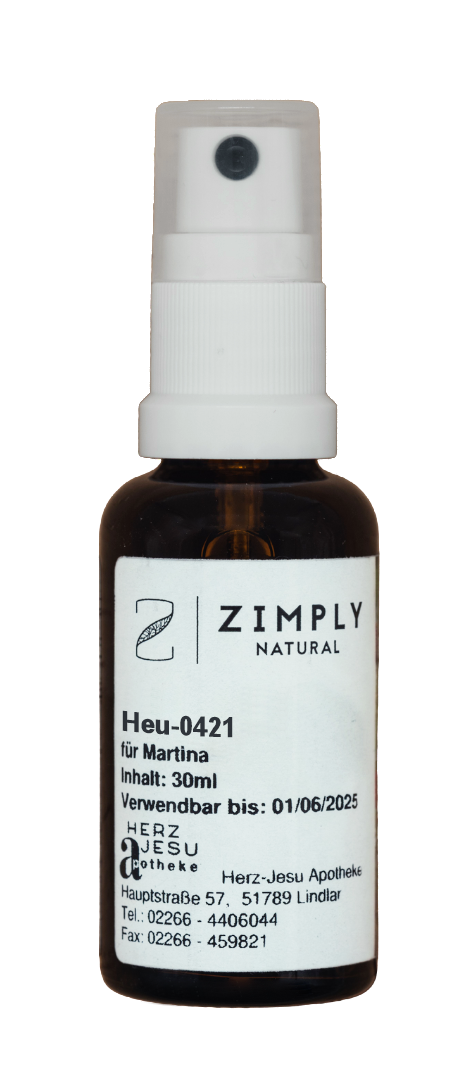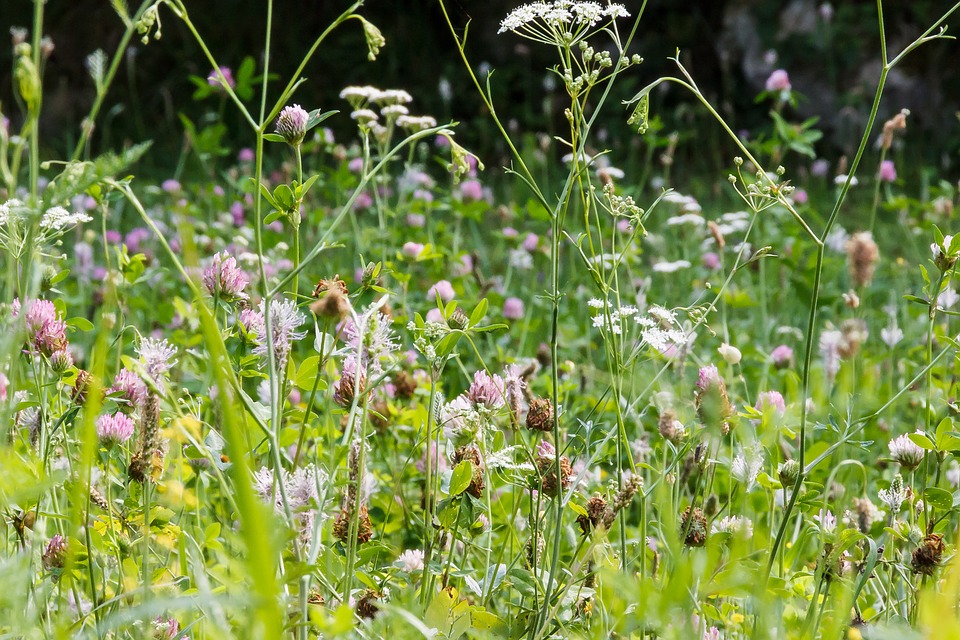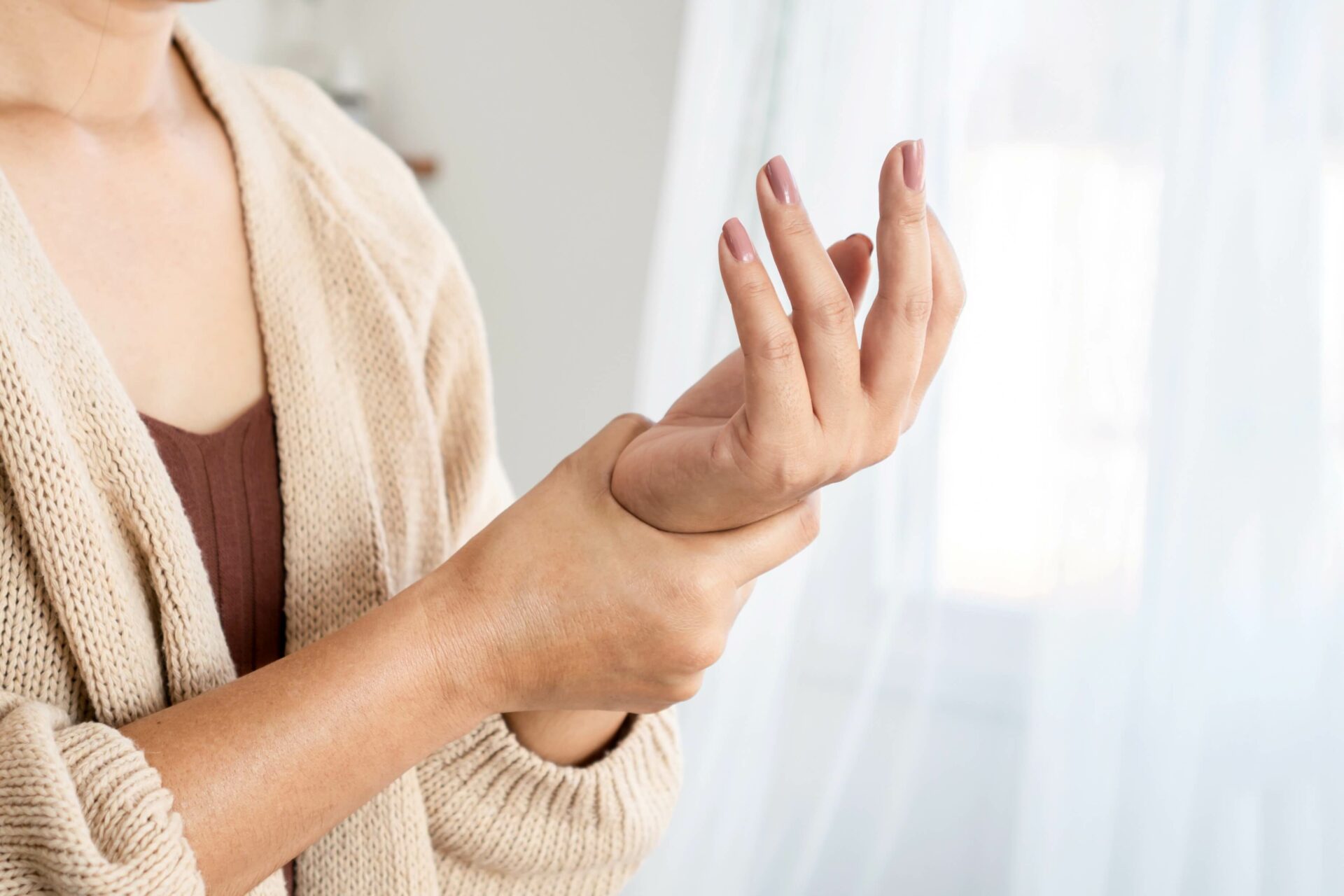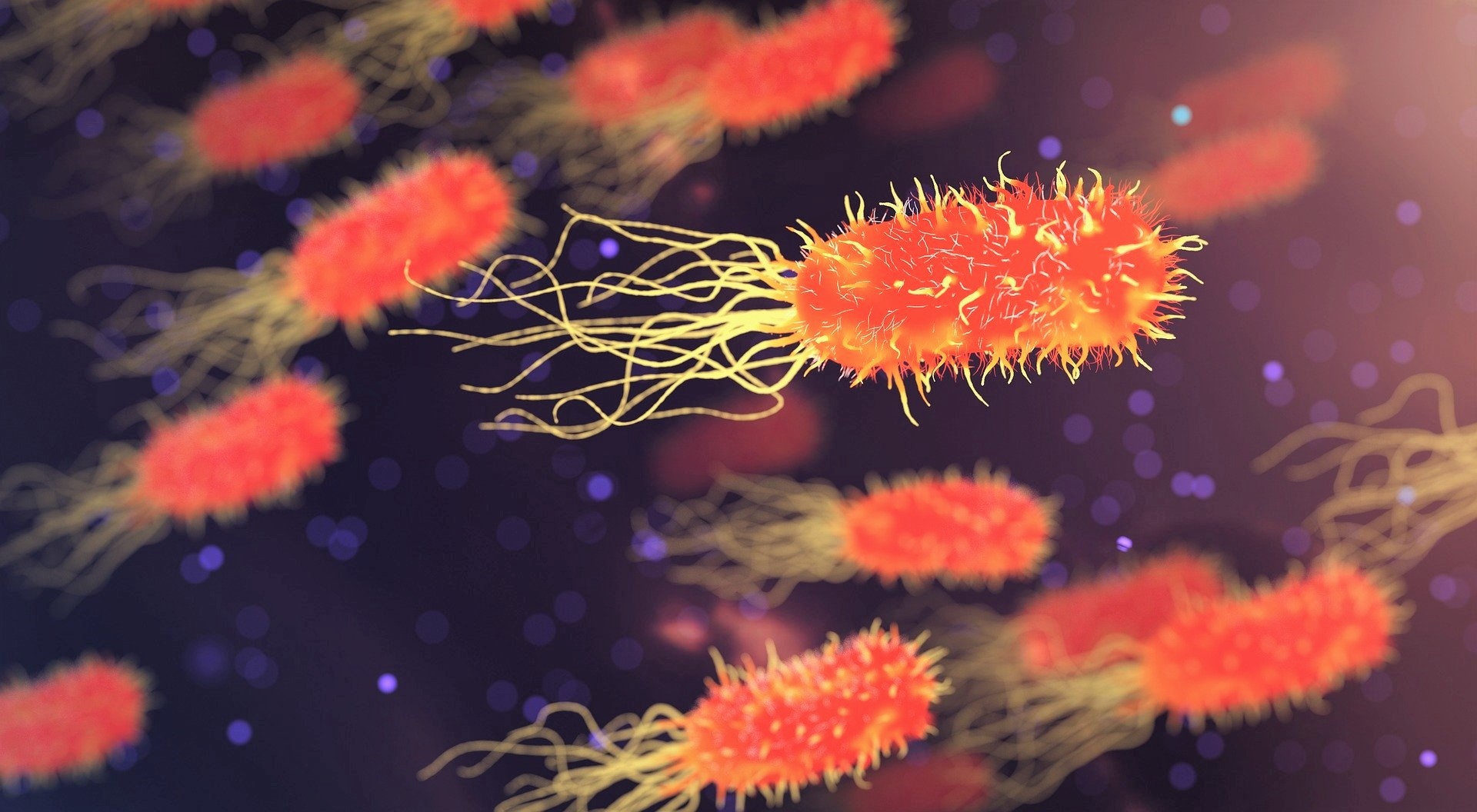
Your individual hay fever mixture
With natural methods such as the individual spagyric sprays from Zimply Natural, complaints can be treated and sustainably alleviated.
Hardly the winter is over, start with many already again the noses to run. It's hay fever time! Almost 2/3 of Germans suffer from itchy eyes, runny noses, frequent sneezing attacks and restless sleep. These symptoms are caused by the Hayfever.
Hay fever, what is it?
In colloquial language, hay fever is often equated with a pollen allergy. Basically, hay fever is a symptom of an allergy triggered by pollen. This hypersensitivity is the most widespread allergy in the general population. Certain pollens irritate the nasal mucosa and trigger inflammation. The Immunesystem reacts hypersensitively to the allergens of pollen. It mistakes the plant pollen for pathogens and wants to fight them. Since the triggering pollen does not buzz through the air all year round, pollen allergy is also called "seasonal allergic rhinitis".
How hay fever develops is not clearly understood. The reason why some people are afraid to go outdoors without tissues during the peak pollen season and others feel absolutely nothing from the fine pollen grains has not yet been precisely determined. It seems that the development of a pollen allergy is a combination of genetic and hygienic factors.
Typical symptoms of hay fever
The nose is constantly running, the continuous cold makes breathing difficult and makes you sluggish. Contact with the pollen causes the nasal mucosa to swell and become inflamed. In addition, there are reactions of the conjunctiva of the eyes, such as swelling and increased sensitivity. Often the eyes water, are painful and burning. The complaints often last for a long time and affect the Sleep quality of those affected. Bacterial or viral infections can manifest themselves. In the absence of treatment, an inflammation can "migrate". For example, if a pollen allergy results in severe coughing or shortness of breath, these are signs that the airways are also affected. In some cases, this can lead to allergic asthma.
When what flies?
Depending on the month, different pollens fly through the air. Basically, different plant allergens are constantly on the move. The first alder tree pollen starts to fly as early as January. From March, willows, ashes, poplars and elms begin to bloom. The beech and the oak even bloom until May.
In summer, grasses are the main triggers of pollen allergy, flying from May to the end of August, or even longer. The most common grass pollens are common knotgrass, common bentgrass and German ryegrass.
Even in winter, some allergy sufferers are not spared. Depending on the weather, the last grass pollen still swirls through the wind in November and in December the first trees can already start to blossom again.
The pollen count is therefore always dependent on the season. Furthermore, the intensity differs depending on the region and time of day. If you live in the city, for example, you will feel your symptoms worsen in the evening. In the countryside, on the other hand, the pollen concentration is significantly higher in the morning. So make sure to ventilate either in the morning or in the evening, depending on where you live.
Risk factors
Environmental factors such as exhaust fumes and pollutants from road traffic can aggravate hay fever. Smoking also has a negative effect on the allergy and can worsen the symptoms. Pollutants stress the mucous membranes and have a negative influence on the course of pollen allergy. They can promote its progression.
Therapy: What to do against hay fever
Some websites list in detail the main flowering season of the different grasses and trees. To some extent, allergy sufferers can base their activities on these calendars. Jogging and other outdoor sports, for example, should be postponed until the morning or evening, depending on whether you live in the city or in the countryside.
To keep the nose from drying out, a nasal steam bath can help. This is very easy to do at home. You just need to heat some water in a pot and steam the water vapor into your face. Breathe in the warm air for some time to moisten the mucous membranes. For a stronger healing effect it helps to use tea bags (Chamomile, mint or Sage), or add essential oils to the water.
For irritated, itchy eyes, moist and cool compresses can help relieve the swelling. Again, place chamomile tea bags in water beforehand to relax your inflamed eyes. Treatment with simple home remedies is quick and easy to apply. However, if you have severe symptoms, you should consider seeking medical advice.
You can find further recommendations on the subject of hay fever here:

Due to mild temperatures begin
already the first early bloomers in January
to spread their pollen.

Ash, poplar, elm (weak)
Especially in southern Germany, some allergy sufferers are already feeling the first symptoms.

Willow, ash, birch (moderate-strong)
Hazel and alder have now reached their peak. Willow, ash and birch are just getting started.

Beech, oak (moderate-strong)
Grass pollen (weak)
High season for ash and birch.
The first grass pollen is in the early stages.

Birch, willow (moderate-strong)
Rye (weak)
There are more and more grasses in the air. The rye begins to bloom, whereas the pollen count of the birch slowly decreases.

Plantain family, stinging nettle (moderate-strong)
There is almost no tree pollen in the air, but more and more grass pollen.

Mugwort, sorrel (moderate-strong)
July is the peak season for grass pollen.

Grasses, plantain plants (moderate-strong)
Actually, only mugwort and ragweed pollen still fly through the air and most allergy sufferers can breathe easy again.

Mugwort, grasses (moderate-strong)
Only a few allergy sufferers still react to ragweed pollen.

The flight of pollen calms down at the end of the year.


Pollen count is never completely predictable.
However, in a particularly mild winter, the first hazel and alder pollen can fly as early as December.






